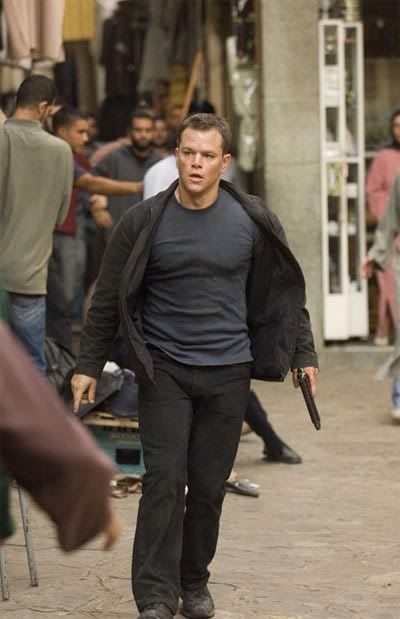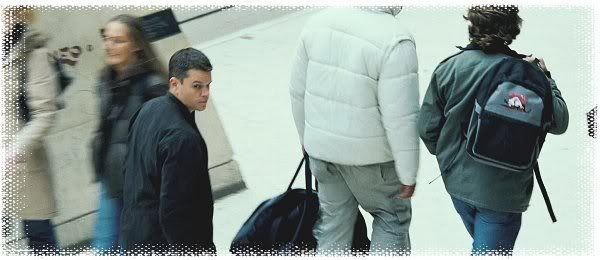Directed by Paul Greengrass. Produced by Patrick Crowley, Frank Marshall, Paul L. Sandberg & Doug Liman. Written by Tony Gilroy, Scott Z. Burns, George Nolfi, Tom Stoppard (uncredited). Music by John Powell. Cinematography: Oliver Wood. Editing by Christopher Rouse
The Bourne Ultimatum brings to a (perhaps provisional) closure a film trilogy that is, all things considered, way superior to the popular fiction churned out by Robert Ludlum, on which Bourne #3 is loosely based. Jason Bourne, the amnesiac operative hunted down by a variety of ruthless hitmen sent after him by the secret services (an obscure cell of the CIA, that is inferred to be his former employer), is going to find out his origin. A series of relatively conventional events/incidents structures the film and makes it flow forward, while taking it to a more and more abstract dimension. In this abstraction lies the real value of this third episode.
Predator and prey, the protagonist of The Bourne Ultimatum, played by Matt Damon, is a character that makes his way at full speed towards the total conscience of an autonomy acquired in the violence of his (re-)actions and the bare instinct of survival. It is also the ecstatic affirmation of an individual self-determination, a personal autonomy that is perfectly capable of defying and defeating modern systems of tracking, fluidly escaping the multiple eyes of omnipresent cameras.
From Moscow to New York, traveling through London and Tangier, the narrative and it eponymous protagonist progress in a world without frontiers, a realm of simultaneity and ubiquity. The vertiginous feeling of being locked in a global enclosure dominates the film, made up of three long and exciting chases sequences de (an outstanding stakeout sequence in Waterloo Station, London, in which Bourne acts as an embedded remote-control metteur-en-scène, a street-and-roof chase in Tangiers, an ultimate car chase showdown in New York).
Paranoid
During the peaks of the film, Bourne must achieve the impossible : stay hidden at the heart of a world of absolute transparency and visibility, in the midst of a gigantic panopticon, a network system built with the means of modern technology (satellite surveillance, computers, cell phones, microchips).
This third episode of Bourne’s adventures in the realm of international espionage is the one that probably pushes the sensation of paranoia the farthest. It gives the sense of a reality entirely under control/surveillance. That new possibilities offered by modern instrumentation makes the conventions of cinematographic action obsolete is a challenge that the film takes up lives up to, in a splendid manner.
The aesthetic parti pris adopted by Paul Greengrass, which increases the credibility and verisimilitude of the events that unfold on the screen, beyond all likelihood, is a peculiar one. The much talked-about hand-held camera work undermines the stability (certainty) of the regard, is shaky, making impossible for the viewer to find, in this confusion, an undeniable center/focus for the unfolding of the action. What could be considered a simple gimmick, or a stylistic preciosity is here a potent addition to the intensity of the suspense and forms a core element of an ultra-kinetic definition of cinema.




No comments:
Post a Comment